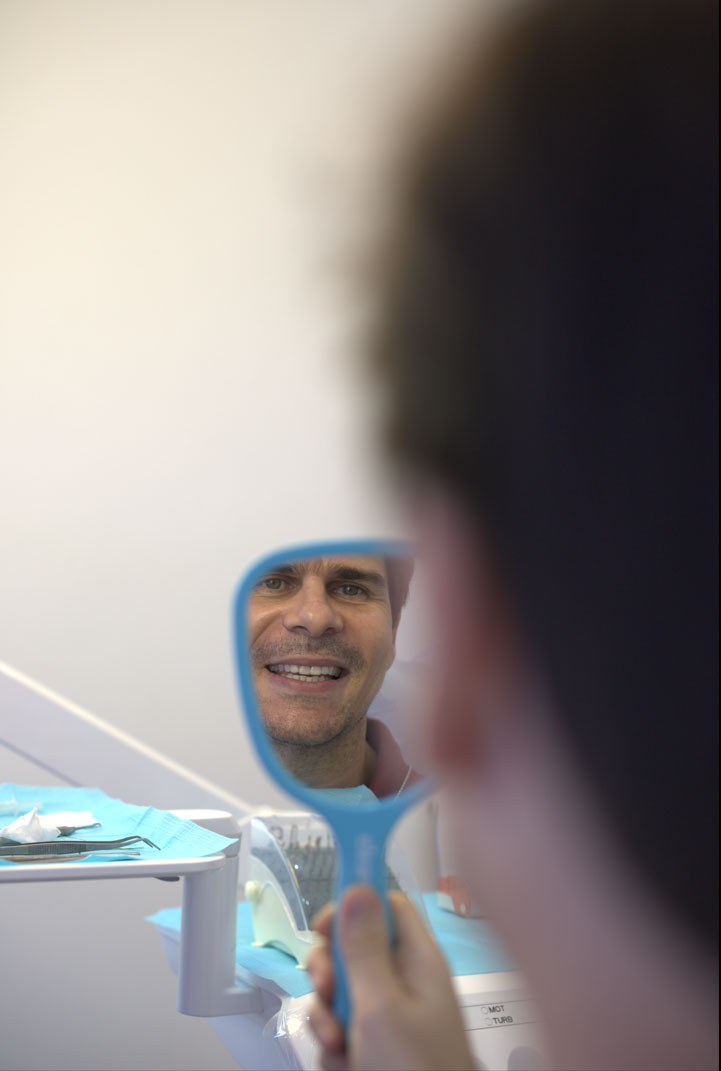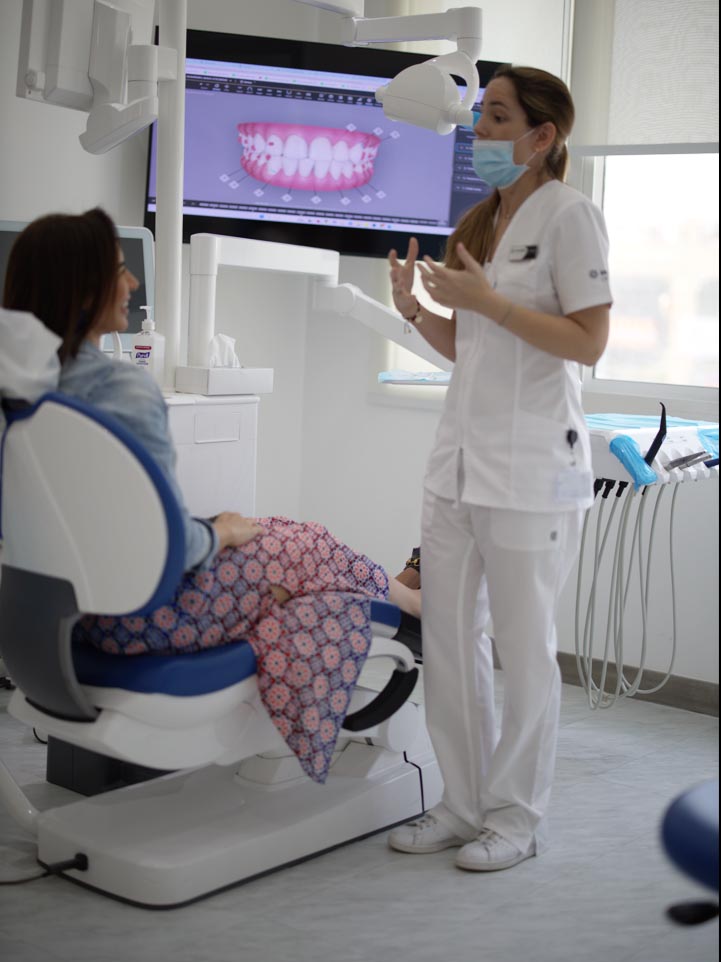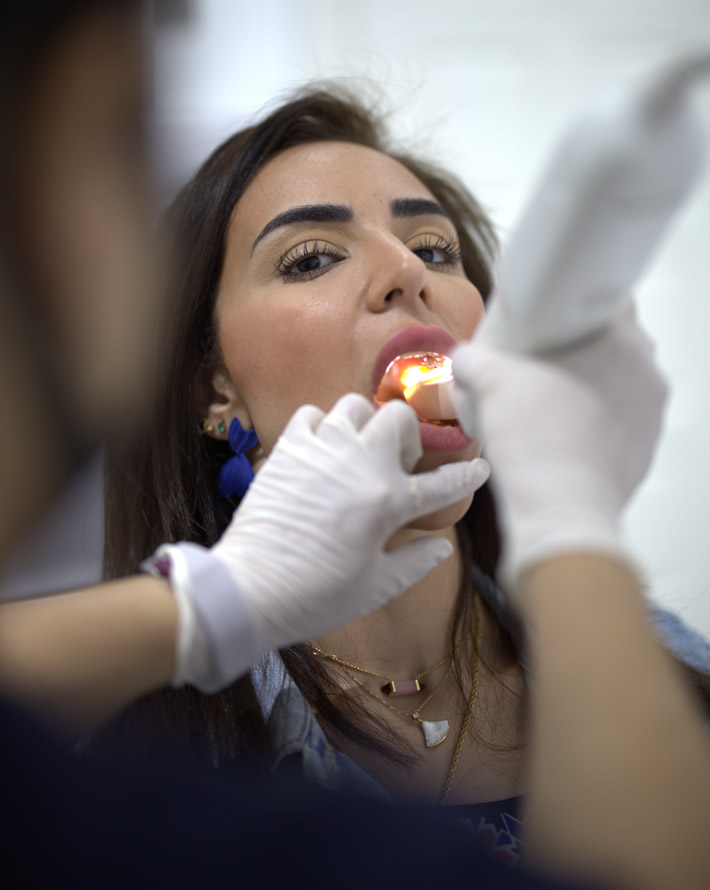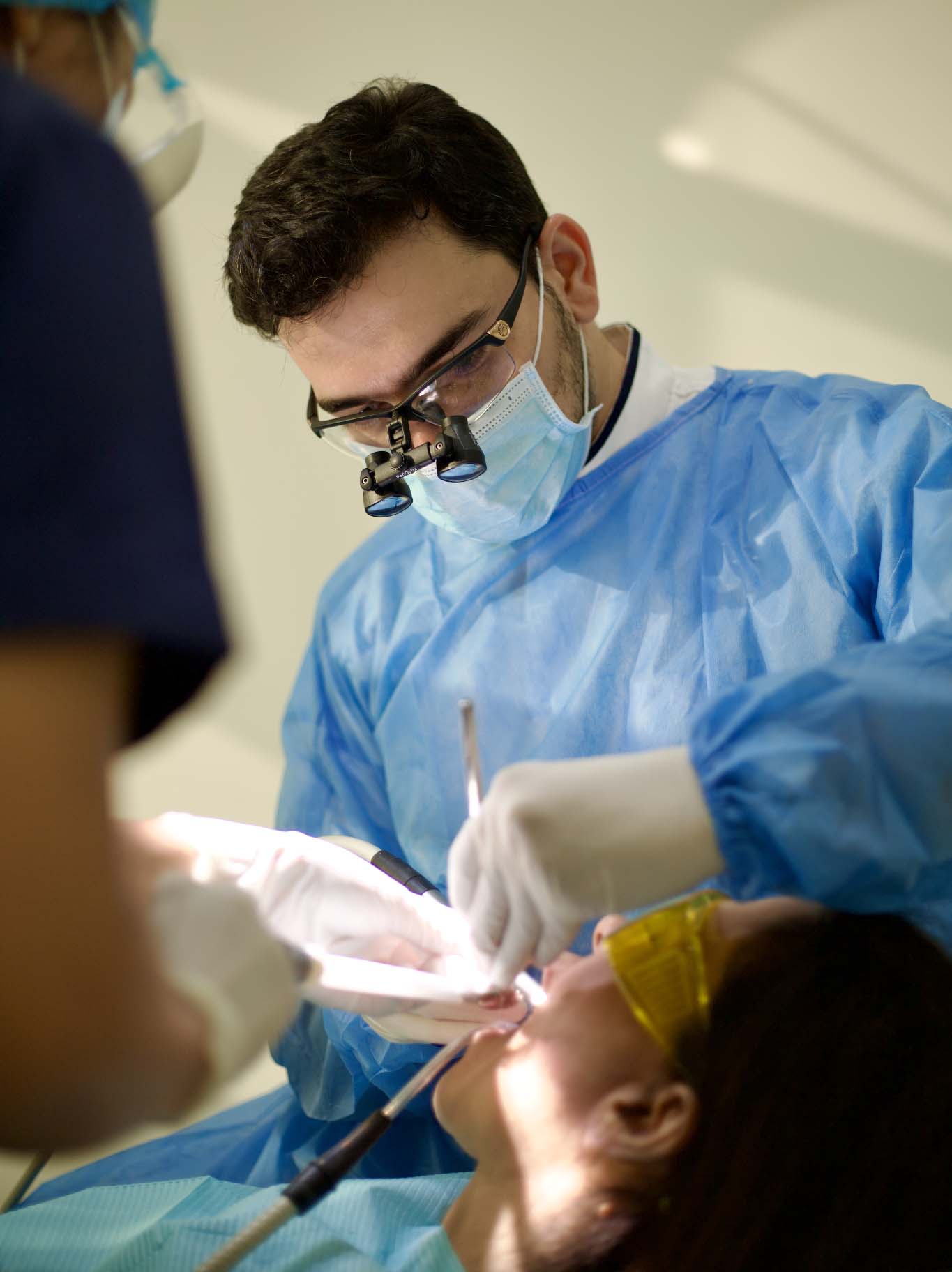Get Straight On 10 Invisalign Truths
Get Straight On 10 Invisalign Truths
Real talk: I’ve never loved my teeth. OK, they were never awful, but Invisalign has long been in the back of my mind. Despite wearing my retainer every single night since getting my braces off in high school, my teeth still moved, and I had what’s called an overjet bite, which means my lower teeth were too far behind my upper front teeth. In other words: not cute. In a lot of ways, Invisalign was the best thing I could do for my smile. But there are a few things I wish I knew before my first appointment. If you’re also wondering if you should try it out, read this first. (If your choppers don’t need any straightening up, you can at least make your smile brighter.
1. YES, YOU ACTUALLY HAVE TO WEAR THEM.
It’s an all-too-true reality, but there’s no dancing it around it: You have to keep the aligners on for at least 20 hours a day or you won’t get the best results. That means breakfast, lunch, and dinner become power meals. Make sure you’re ready for that commitment.
2. YOU CAN’T SEE THEM, BUT YOU CAN HEAR THEM.
There’s a reason they are called invisible braces—no one could tell I was wearing them. Until I started talking, that is. (I dare anyone with Invisalign to try asking, “What’s your skincare secret?” without lisping.) Luckily, it got better with time—going from cringe-worthy mumbles to coherent ssssentences—and by the end, no one noticed my lisp, either.
3. IT’S NOT THE RIGHT TREATMENT FOR EVERYONE.
Invisalign can treat most orthodontic issues, like crooked teeth, minor over/under bites, or gaps. To see if it’s right for you, you can take the Invisalign’s Smile Assessment.
4. YOUR TRAVEL TOOTHBRUSH WILL BECOME YOUR BEST FRIEND.
You’ll need to use one (with its companion, the mini tube of toothpaste) in between meals, so your cereal/salad/chicken doesn’t linger in your mouth longer than it needs to. Assuming you eat the typical three times a day, that means you’ll need it for 21 instances in a single week. That’s a whole lot of brushing; invest in a few.
5. YOU’LL HAVE TO LIMIT YOUR MORNING COFFEES.
In general, drinking anything that can stain your teeth—coffee, red wine, tea—will stain your Invisalign. So if you rely on a cup (or three) of java to fuel your mornings, be warned: You won’t get to enjoy it quite like you used to. You’ll have to factor it in to your allotted time to eat breakfast, or take it out before your second cup (and always brush before you put the trays back in). The same goes for post-work glasses of wine—something I wish I knew before signing up for the treatment.
6. YOU MIGHT (ACCIDENTALLY) LOSE WEIGHT.
Midday snacks will never be the same, and mindless eating becomes obsolete. It’s the biggest blessing in disguise: After every meal, you have to brush your teeth. So when you get that 2 p.m. craving, you’re forced to stop and ask yourself “Is it really worth it?” Most of the time, it’s not, and you quickly become aware of your senseless snacking. Just remember: When everyone else is eating cake for a colleague’s birthday, you may curse your Invisalign…until you notice your clothes start fitting better.
7. IT’S VIRTUALLY PAINLESS.
I remember shrieking—loudly—every time I got my braces tightened in high school (I blame my child-like pain tolerance), so trust me when I say Invisalign does not hurt. No, you won’t be able to eat raw carrots on your first day, but it’s like a walk in the park compared to its metal counterpart.
8. CLEANING THEM WITH TOOTHPASTE IS A NO-NO.
The only thing more noticeable than spinach wedged between your teeth is a murky, yellow Invisalign tray. This can happen if you don’t brush post-meal, but also because you’re washing it with toothpaste—as surprising as that may be.
9. IT COULD TAKE LONGER THAN YOU THINK.
The average treatment of Invisalign is one year, so I was ecstatic to learn I only needed six months. But then…on my last day of supposed treatment, BAM! I was told I need a new set of “finishing” aligners to get them as close to perfect as possible.
10. IT’S 100 PERCENT WORTH IT.
Through all the missed birthday cakes and wine nights, I would do it again in a heartbeat. My teeth no longer bother me, I’ve become a devoted flosser and a mindful eater, and that, to me, makes it completely, totally, wholeheartedly worth it.





